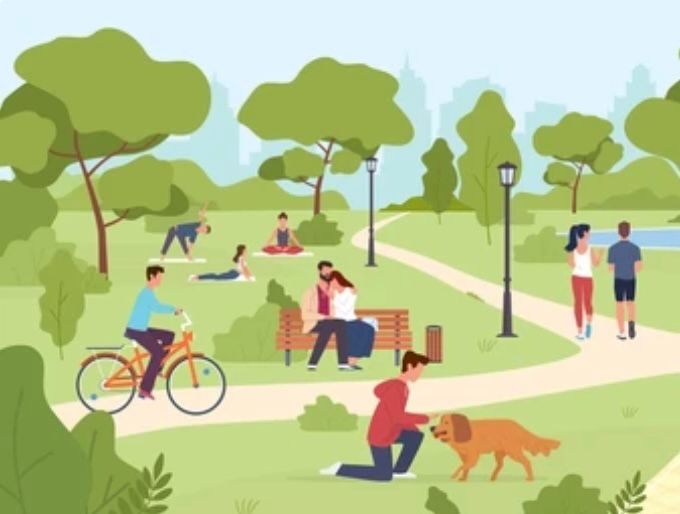
Read chapter 1 (pages 9 - 13)
Find the 10 words hidden in the puzzle and write them down.
2.
3.
4.
5.
7.
8.
9.
10.
https://editor.mnweg.org/mnw/dokument/chapter-x6pcpalh
Have to
August: "I have to go into hospital sometimes for surgery.
We use it to express *impersonal obligation. Something you need to follow a rule.
Structure:
have/has to + infinitive
I have to go to school in the mornings.
My sister has to go to bed at 8.00 p.m.
*unpersönliche Verpflichtung
Fill in the gaps using have to or has to.
1. We write a test in Maths.
2. Sandy help her brother.
3. Tim and Tom deliver the newspaper in the morning.
4. I finish my English package.
5. My father repair our car.
https://editor.mnweg.org/mnw/dokument/chapter-x6pcpalh
Picture Description
1. In the picture
I can see...
There is/are
Give an overview of the locations, objects, activities, people and main objects
1
When? Who?
What? Where?
Why?
The basics: Say what the picture is generally about
2
What is happening?
3
Use the „present progressive“ form to describe what is happening in the picture
https://editor.mnweg.org/mnw/dokument/chapter-x6pcpalh
Present progressive
August: Mr Tushman is talking to August.
The Present Progressive is used to describe a picture.
Structure:
> We need the correct form of to be and then we add -ing to the verb.
> When a verb ends in -ie we change the -ie to -y then
add -ing.
to die – dying to lie – lying
> When the verb ends in -e, we cut off the -e and add -ing
to come - coming to make - making
> When the verb ends in -m, -n, -p, -t, we double these letters and add -ing
to run - running to stop - stopping
Examples from the picture below:
A man is riding his bike.
A couple is sitting on a bench.
A man and a woman are jogging.
https://editor.mnweg.org/mnw/dokument/chapter-x6pcpalh

words
https://editor.mnweg.org/mnw/dokument/chapter-x6pcpalh


